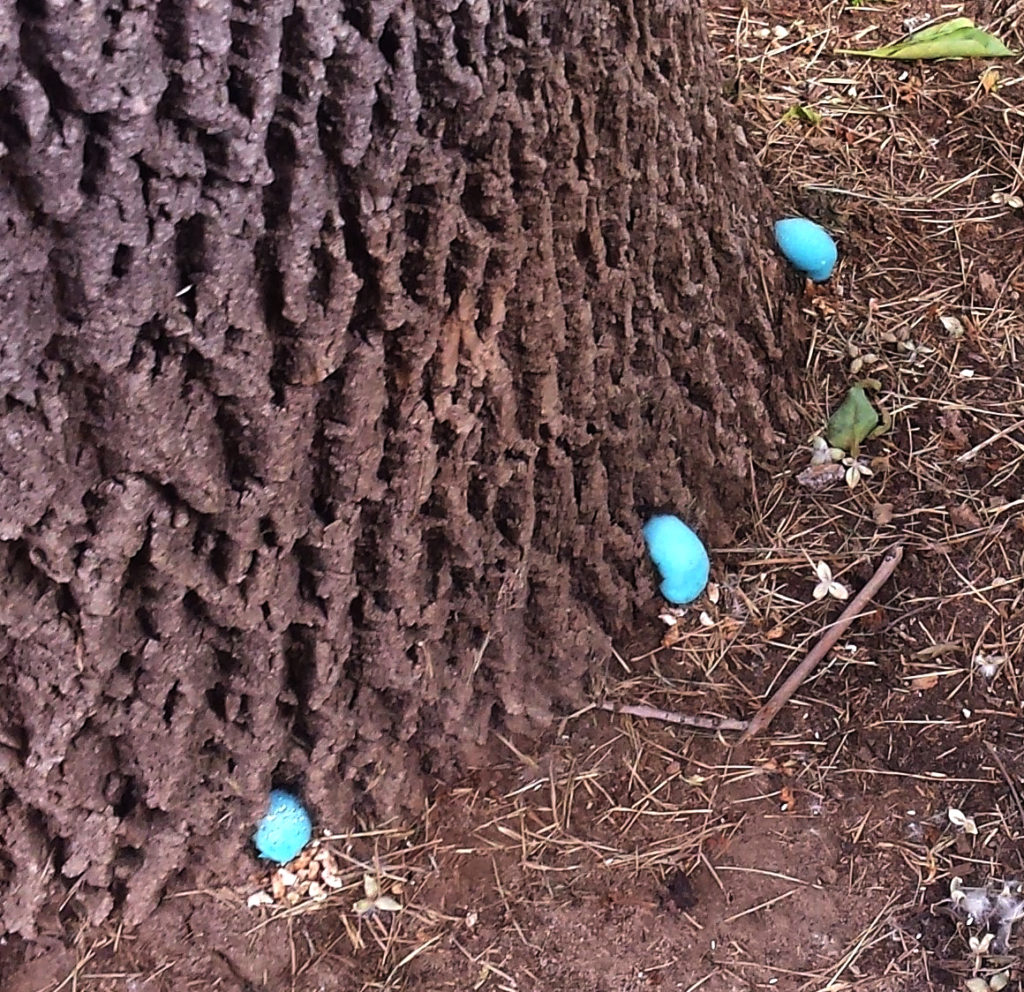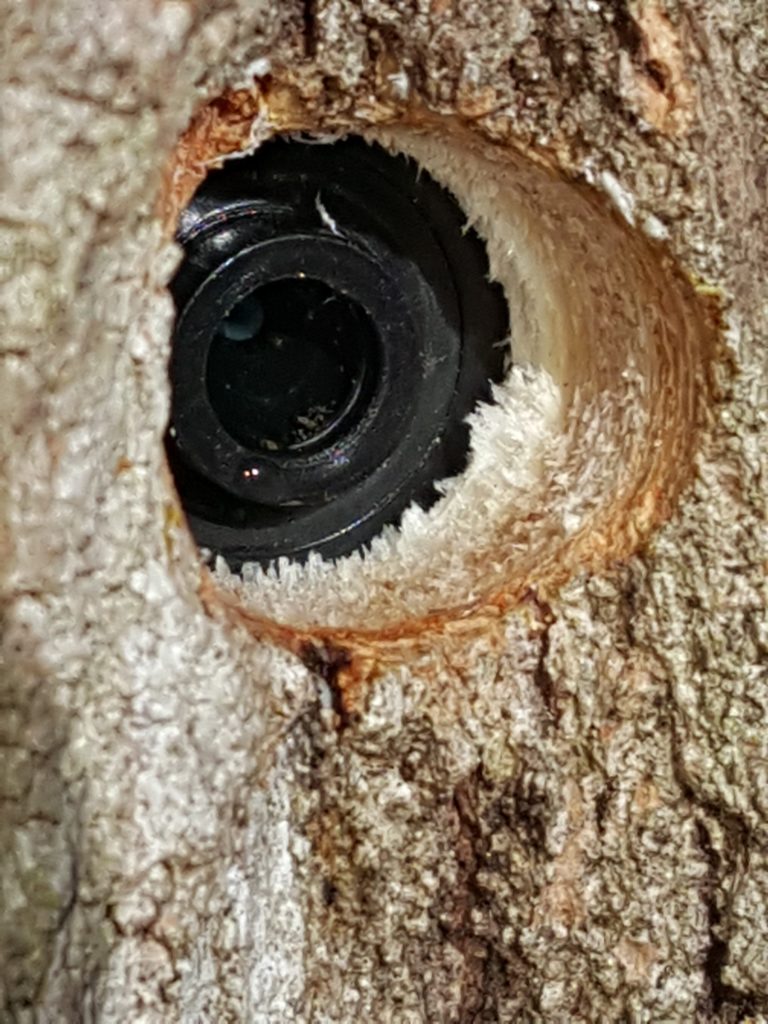What are the facts about whether plugs are necessary or helpful when injecting trees? Read on to reach your own conclusions…
Our company has delivered innovative, industry-changing, science-based solutions to protect urban forests from insects, diseases, and environmental factors throughout our 20-year history. Creating differentiation between competitive products is the job of marketing groups in every company, but the science of why we guide and advise you is not subject to the whims, or creative energies of marketing teams. It is based on facts, not opinion. We base recommendations on the results that get reviewed by peers, proven by thousands of experiential trials by Arborists, across cities, and on hundreds of thousands of protected trees.
Arborplug(s), the device designed by Arborjet to seal an injection site and to allow the one-way flow of treatment material into the tree, were developed through years of exhaustive experimentation, and after considering all extant technology at the time. They were developed to address a great many concerns which existed then, and still exist today in some injection methods which do not offer plug options. Here are some of the ways that plugs support and enhance injection technology.
- Plugs assure that the injected chemistries are placed in the tree xylem, not in the cambial tissue which is just inside the bark. These plugs assure that the various solvents used in treatment formulations do not contact the living and actively growing part of the tree, thus, plugs significantly reduce the likelihood of damage to this sensitive tissue. When damage does occur to cambium, the evidence is not immediately visible. It is hidden by the bark. This cambial damage as seen below, often shows up 1-3 years post injection and can leave visible, notable damage, can initiate decay, will disrupt the healthy vascular transport in a tree, and could cost you a client when the damage becomes evident.

- It has been suggested that injections cause internal decay as evidenced by discolored xylem found when trees are dissected. However, In a peer reviewed publication of Arboriculture & Urban Forestry (2016: 42(6): 389-399) designed to assess the nature of xylem discoloration associated with injection of systemic insecticides; The Authors (Tanis and McCullough) state; “… researchers examined 507 injection sites on 61 trees, and found … no evidence of pathogen infection”. “Confocal laser scanning and polarizing digital microscopy were used to assess the integrity of discolored xylem tissue removed from the immediate vicinity of 140 injection sites, on 61 trees and … found no evidence of decay associated with discoloration.” These trees were all injected through Arborplugs.
- Injection sites where plugs are used immediately sealed them against opportunistic fungi and insects, thus clearly reducing the risk of infection or infestation which may occur in open injection sites. Dr. McCullough’s work as discussed above, validates these empirical observations.
- Plugs keep product from flowing back out of injection sites. Plugs prevents accidental off-target exposure and assure that the full dose is delivered to the tree, resulting in the expected result. The marketing plan of some companies suggest that they can save you money by “doing without plugs”, but a single ml of lost product from their injection site without a plug, pays for the plug, and plugged injections can be performed at the pressure necessary for efficient treatment. Ultimately, the client wants to save their tree and to protect the environment while doing so.

- Proper Plug Setting – A properly set plug allows the tree to close over the top of the plug using its xylem tissue. While the plug instantly closes off the injection site from opportunistic insects and diseases, bark will often close over the injection site is less than a year in all parts of the US. Plugs should be set to a depth, so a small ring of light-colored xylem is visible around the larger diameter of the outer plug. The most common error in setting plugs is not placing them deep enough, where the white xylem is just visible. That error can result in slower close-over, or sometimes, the plug is pushed out a year or two later.

- Speeds the closure of Injection Site -The plug acts much the way a properly pruned branch is closed over by the branch collar. The xylem moves horizontally across the top of the plug, just like a pruned branch stub. Branches that have decayed in nature (left pic) may leave a large gaping hole which may take years to close over. I have found that similarly, unplugged injection holes (two on right) may remain open for years, and sometimes leak product during the next treatment a year or more later, because they are still open.

Open injection sites provide a toehold for opportunistic insects and diseases to enter the tree, much like branch dieback areas. A plug instantly seals that injection site, limiting any incursion by pests.
- Prevents Applicator exposure during injection – Injection systems create pressure upon injection with uncertainty whether the tree has taking up the chemistry, and whether the pressure has equalized after injection, before removal of the injector. The plug has a one-way rubber septum which allows material to enter the tree, but upon removing the injection needle, the plug reseals, keeping the full dose in the tree, and away from the applicator and the environment.
- Because a plug has 3 barbs to secure the plug in the xylem, damage to bark is eliminated when set correctly as above. Additionally, when weather, tree health, or vascular tissue characteristics created slower uptake conditions, a plug allow safe, effective injection at higher pressure to allow for effective productivity in almost all conditions. This means that work can go on when other systems just can’t perform.

We have always offered the option for plug-less injection using our special stinger needle, which can be attached to all our systems. It is seldom preferred by most arborists for all the reasons stated above. It is sometimes used in the treatment of large numbers of trees, especially when away from human contact. While our guidance allows the choice of either method, the best practices and the science dictate that we recommend and advise the use of plugs during routine injection procedures.
Robert Gorden
Director of Urban Forestry and Business Development
Arborjet, Inc.
